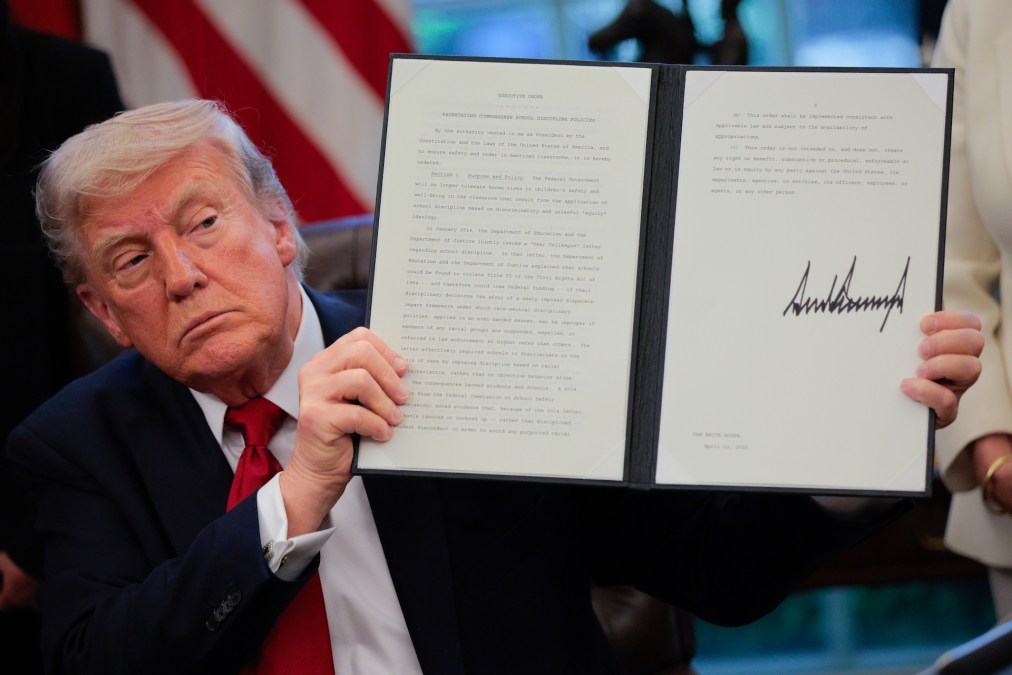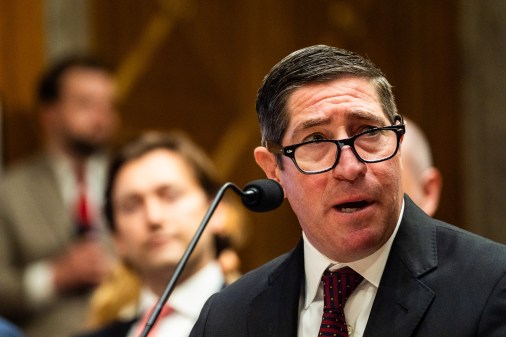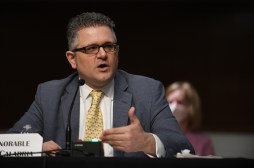Trump White House launches ‘Schedule G’ for political policy officials

President Donald Trump signed an executive order Thursday to establish a new classification of federal workers in policy-related roles who aren’t career civil servants called “Schedule G.”
The schedule appears to create another avenue for political officials in the U.S. government and follows myriad efforts by the Trump administration to reshape the federal workforce, including reductions-in-force, terminations, and programs to incentivize worker departures.
In a fact sheet accompanying the order, the White House described Schedule G as an effort to increase “the horsepower for agency implementation of Administration policy” and fill a gap in federal hiring classifications.
Per the fact sheet, existing schedules don’t “provide for non-career appointments to policy-making or policy-advocating roles.” The White House specifically pointed to Schedule C, which are non-career confidential or policy-determining roles, and Schedule Policy/Career would be for career confidential or policy-related roles should a proposed rule establishing it be finalized.
“Creating Schedule G fills this gap and facilitates appointments of non-career federal employees who will serve temporarily and implement the policy agenda prescribed by the American people through our elections,” the White House fact sheet said. It gave the Department of Veterans Affairs as an example of an agency that would be able to streamline appointments under the new classification.
Under the order, the Office of Personnel Management is directed to adopt any regulations it determines are necessary to implement the policy.
Duplication, more politicals
Reacting to the announcement, researchers and academics questioned the utility of the schedule in the context of the existing Schedule C and told FedScoop it appears to duplicate existing hiring abilities under that classification.
“One point of confusion is why this is necessary,” Donald Moynihan, a professor at the University of Michigan’s Ford School of Public Policy and co-director of its Better Government Lab, said in an email.
“The President can already make lots of appointments via the Schedule C route,” Moynihan said. “This may be a way of pushing more appointments to the most senior levels of government, with a higher pay category beyond what Schedule Cs are typically paid.”
Nick Bednar, associate professor at the University of Minnesota Law School focused on administrative law and executive branch politics, similarly said he believed the Schedule G proposal was “redundant with the existing Schedule C.”
Bednar said in an email that Schedule C was initially created with the intention of establishing classification for lower-level, non-career political appointees in “confidential or policy-determining” roles, and to preserve Schedule C, Congress exempted “confidential, policy-determining, policy-making or policy-advocating character” roles from the competitive service in the Civil Service Reform Act.
The new Schedule G appears to create a schedule within the excepted service — which is for roles that don’t go through the competitive hiring process — for the remaining categories, he said.
“In my opinion, most of the noncareer positions that could be permissibly classified as ‘policy-advocating’ or ‘policy-making’ would fall within Schedule C anyway,” Bednar said. “Therefore, Schedule G feels redundant with the existing excepted service schedules except for the specific words being used.”
Ultimately, the experts said the action appears to be an attempt to increase the number of non-career appointments in government.
William Resh, a professor at Georgia State University and chair of its Department of Public Management and Policy, said in an email that the schedule “diminishes democratic responsiveness of public agencies by avoiding any accountability to the legislature through its relative influence over personnel selection.”
“This certainly enhances a unitary presidency, but it risks an executive branch that works only for the president and his parochial interests, rather than coequal constitutional branches and the constituencies they represent,” Resh said.






